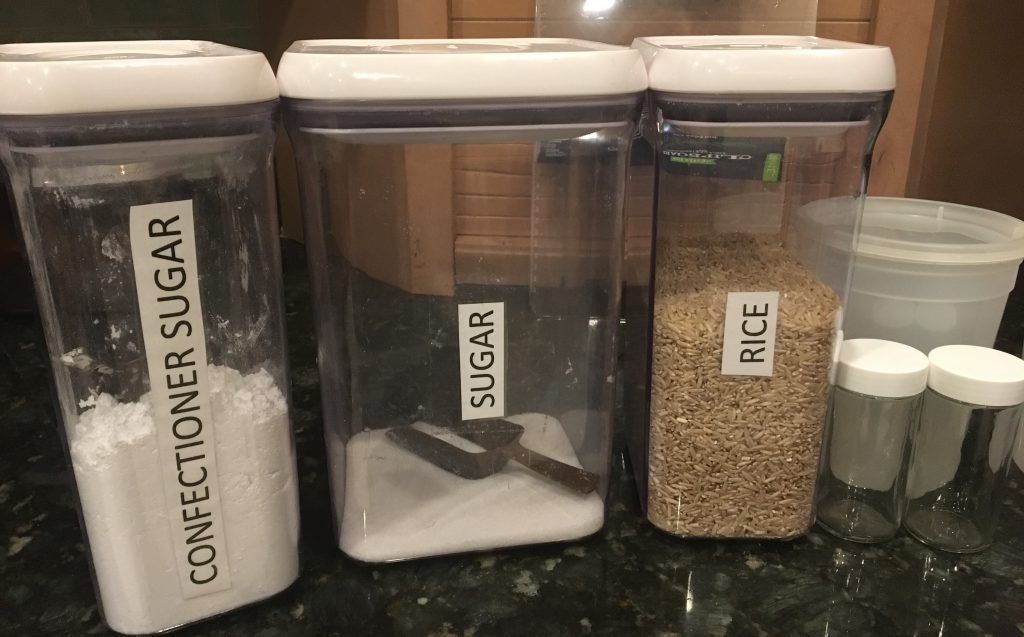by Heidi Copeland | Dec 2, 2017
 Recently, in what I thought would be a quick Saturday errand, I got stuck in traffic. It took me a moment to realize that the holidays are upon us.
Recently, in what I thought would be a quick Saturday errand, I got stuck in traffic. It took me a moment to realize that the holidays are upon us.
According to the National Retail Federation (NRF®), from Thanksgiving Day through Cyber Monday, more than 174 million Americans shopped in stores and online during the five-day holiday weekend, beating the 164 million estimated shoppers from an earlier survey. In fact, shoppers spent $1 million a minute on Black Friday and about $6.6 billion in total on Cyber Monday. The NRF® also found that consumers, both young and old, were spending more than last year, with both groups using the internet to browse for the best deals.
While it appears many consumers can spend unrestrained during the holidays, a lot of consumers find the holiday season stressful. Holidays require a lot of planning, and of course time and money.
A sensible way to approach the holiday season is to decide up-front what best fits the path you want to take. Come up with a plan, make a list (check it twice), and then stick to it. You will be amazed at how this simple list trick can relax you and make your holidays more enjoyable and less stressful.
The American Financial Services Association Education Foundation has some useful ideas for using a holiday spending plan. First, create a holiday budget that is feasible for you, and be sure to include all the incidentals from decorations to wrapping materials. Next, prepare your list(s), then do your homework. There is a lot of competition for the consumer’s money, and searching the web not only for information but also for the best deals can help you stick to your budget and save some money (Example: some stores honor other store’s pricing).
Other ideas to help stay within your budget this holiday include:
- Draw names with set limits on gift giving (Example: Aunt Marge – $15.00)
- Make a gift (Example: Cranberry muffins)
- Provide a service (Example: tackle a chore for a friend, neighbor, or loved one)
- Switch to giving gifts of experience (Example: tickets to an event) The gift of experience can be both practical and educational, and moreover, memories are worth more than stuff!
Try not to get bogged down by holiday spending this holiday season. I encourage you to create a plan, write up a list (check it twice) and stick to it. You will be glad you did!
The University of Florida Extension/IFAS – Leon County is an Equal Employment Opportunity Affirmative Action Institution.
by Pam Allen | Nov 18, 2017

Pantry Staples
Photo credit: Pamela Allen
With fall around the corner and school starting back, it is time to take inventory of your pantry. You should really dig in and see what is lurking in the dark reaches of your back shelves. This task should be done on a regular basis to help keep foods rotated and use products that are close to expiration. It is also a good idea to refresh items that are low and you use often. Many times we are caught in the middle of preparing our favorite dish and find we are out of an ingredient. By planning and taking stock of what is in your pantry, it will be easier to plan quick and easy meals and hopefully avoid that trip to a fast food establishment to pick up something quick.
Having basic supplies on hand will keep you prepared to put together a family-friendly meal or a last-minute dinner for friends. Try to write down 4 or 5 favorites that your family likes and then keep these items on hand by keeping an inventory of your most used items. A well-stocked and organized pantry will streamline menu planning and save time on your daily food preparation. Your family will thank you for making this easy to use and find items that they most often like to eat. Here are some tips to get started:
- Decide where you will house your pantry. It can be a designated cabinet, standalone structure or a built-in pantry. The idea is to define where you will keep these supplies for easy access and organization.

Pantry – use containers you have on hand.
Photo credit: Pamela Allen
- Inventory what you currently have and use these items first. There are many good inventory ideas you can find online. Keep a clipboard handy with your inventory list so that you can quickly see what you have on hand and what you need to add to the grocery list. Look for sales that are cost saving to stretch your food budget. Many local stores are advertising BOGOs (buy one get one) so capitalize on these items as they are on sale.
- Menu planning should be a weekly task to save time and money at the grocery store. As you plan out a weeks’ worth of meals, make a shopping list you have checked against items you have on hand. Meal planning should be centered around seasonal availability and the preferences of your family.
- Use storage containers that you have on hand. Glass containers like canning jars make great storage units for staples. The glass also allows you to see what is in the jars quickly. Remember to label items with stickers and in some cases you may need to put the purchased date.
Whatever you decide to toss in your shopping cart, you can rest happy knowing you won’t ever again have to call spaghetti with butter dinner — unless that’s exactly what you’re in the mood for.
This Healthy Eating Food Storage Guide can assist you http://edis.ifas.ufl.edu/pdffiles/FY/FY69900.pdf
Pantry items are considered dry goods or staples, things you always have on hand. Ideally, they will keep for a long time in storage, or are fresh, perishable foods regularly used up before they spoil. The idea is to subvert the need to go grocery shopping every time you cook — a major hurdle when getting food on the table.
You don’t have to buy everything at once; just buy what you think you’ll eat fairly often, and in small quantities so foods stay fresh. Build up your pantry gradually. Of course, not all ingredients work as pantry staples — fresh fruits, vegetables, meats, and other foods are perishable.
by Heidi Copeland | Jan 23, 2017
 In the early 70’s Gary Iskowitz, was doing graduate work as well as teaching tax law while working for the Internal Revenue Service (IRS) agency. Mr. Iskowitz saw a growing problem with questionable tax preparers who were scamming low-income people in his area. He did not like what he saw! Consequently, he proposed that he train a minimal number (10) of likeminded student volunteers to go into the community to prepare free tax returns for underserved residents. People lined up around the block waiting for them.
In the early 70’s Gary Iskowitz, was doing graduate work as well as teaching tax law while working for the Internal Revenue Service (IRS) agency. Mr. Iskowitz saw a growing problem with questionable tax preparers who were scamming low-income people in his area. He did not like what he saw! Consequently, he proposed that he train a minimal number (10) of likeminded student volunteers to go into the community to prepare free tax returns for underserved residents. People lined up around the block waiting for them.
The following year, almost 100 students were recruited and trained to prepare free tax returns for low-income residents. The rest, they say, is history!
This college-volunteer effort significantly strengthened the Volunteer Income Tax Assistance (VITA) program. Now, more than 40 years later, VITA is still going strong.
VITA is still designed to promote and support free tax preparation service for the underserved, in both urban and non-urban locations. Service is targeted to low-to-moderate income individuals, persons with disabilities, the elderly, and limited English speaking.
Why? Just as in Gary Iskowitz’ time, this program is an effort to provide both a valuable community service and a powerful learning experience for the participants. Not only does a tax payer get their taxes done for free, the local community benefits from the monies spent by the tax payer. Plus, the IRS is pleased because citizens are in compliance with federal law.
Volunteers come from the local communities they serve.
If you plan to take advantage of any of the VITA programs this year, be sure to bring the proper documentation. A return cannot be prepared without the appropriate certification.
And know that in an effort to stop fraudulent tax return payments, beginning in 2017, if you claim the Earned Income Tax Credit (EITC) or Additional Child Tax Credit (ACTC) on your tax return, the IRS must hold your refund until at least February 15 — even the portion not associated with EITC or ACTC.
What to Bring to Your Local VITA Site:
- Proof of identification (photo ID)
- Social Security cards for you, your spouse and dependents on the tax return or a Social Security number verification letter issued by the Social Security Administration
- An Individual Taxpayer Identification Number (ITIN) assignment letter may be substituted for you, your spouse and your dependents if you do not have a Social Security number
- Proof of foreign status, if applying for an ITIN
- Birth dates for you, your spouse and dependents on the tax return
- Wage and earning statements (Form W-2, W-2G, 1099-R,1099-Misc) from all employers
- Interest and dividend statements from banks (Forms 1099)
- A copy of last year’s federal and state returns, if available
- Proof of bank account routing and account numbers for direct deposit such as a blank check
- To file taxes electronically on a married-filing-joint tax return, both spouses must be present to sign the required forms
- Total paid for daycare provider and the daycare provider’s tax identifying number such as their Social Security number or business Employer Identification Number
- Forms 1095-A, B or C, Affordable Health Care Statements
Start 2017 off right! Being well-organized and getting your information together can save you a lot of time and maybe even money!
by Melanie Taylor | Dec 5, 2016
As the holiday season quickly approaches many people become overwhelmed with all of the activities, decorating, and shopping that needs to be completed. Here are a few tips to save energy, time and your nerves.
 Let’s begin with 5 Steps to Seasonal Savings:
Let’s begin with 5 Steps to Seasonal Savings:
- Recognize Your Seasonal Stressors: Know your personal stressors—such as family, friends, work, travel, social outings and traditions (both old and new)—then you can be less stressed this holiday season. Marketing ploys sneak into every stressor, and retailers want to ensure they get their piece of the holiday pie by using marketing gimmicks to lure you into shopping with them. Do you find yourself with the overwhelming desire to get everything on your child’s list? If so, consider going without a list or setting limits, and communicate with your child. Often, parents do not involve their children in the holiday spending process. Children need help recognizing when and how they have been targeted and persuaded to want the latest and greatest item. Children also need to understand that a budget is necessary and saying “no” to an overpriced item is okay.
- Develop a Holiday Spending Plan—Make a Budget: Ask yourself: How much have I saved? How much can I save before the holidays? Am I comfortable creating debt? Am I comfortable saying “no”?Start with knowing how much you can spend and create a spending plan, which is critical for successful money management for the holidays and all year long. A few dollars from your paycheck each week adds up quickly over a year. You can also take advantage of weekly automatic transfers into your bank account, or join a holiday savings club at a local credit union. If your holiday budget shows you are spending more money than you have, then you’ll likely take on debt. If this is the case, you should also create a plan for paying off purchases made with credit. Prioritize your purchases and consider omitting purchases that require taking on debt.
- Develop a Holiday Spending Plan—Create a List and Stick to It: Make sure you have a list of everyone you plan to buy for during the holidays and of other additional expenses. Decorations, cards, postage, gift wrap, food/entertainment, and travel are additional costs that can drastically impact the holiday budget. Don’t forget to use catalogs, internet surfing for comparison shopping, and barcode scanning apps. Shopping online also limits impulse purchases, and it allows you to avoid long lines, huge crowds, and the lure to eat out while shopping. Be sure to use coupons whenever possible, and be sure to take advantage of the year-end sales. Once you’ve researched and set your budget, you’re ready to start shopping.
- Alternatives to Pricey Presents: If you have a large family, start by thinking outside the box. Consider a gift exchange by drawing names from a hat, which can allow you to put more thought than money into selecting a single gift. You can also buy a single gift for an entire family—perhaps an entertainment basket filled with DVDs and microwave popcorn. Oftentimes, thoughtful and more creative gifts can come from shopping with local businesses. Locally grown fruits and vegetables, honey, or an item from a local artist are just a few suggestions of local products. If you are feeling crafty, then you could make and give holiday arrangements such as centerpieces and decorations. Another idea for the holidays is to donate to a charity in someone’s name instead of gift giving. You can even take the idea of giving to charity to your office. Pool money you would have spent on gifts with your participating colleagues, draw a colleague’s name, and donate the money to a charity of his or her choice. Another gift idea for close friends and/or family is the “gift of time.” Create a coupon book or certificate that gives a loved one the gift of your time (a specific chore, a trip to the park, babysitting, slumber party for the kids).
- Fine-Tuning Your Financials: Use cash and/or debit cards when at all possible. Money coming directly out of your pocket will likely make you think harder about your purchase. If you are going to use a credit card, make sure you have a plan in place to pay it off when the bill is due. You also need to understand the allure of paying with credit. When you’re not paying with “real” money, your buying can easily get out of control, and the shopping process may not seem as painful in that moment. It may be appropriate to tell your older children how much they each have in the budget for holiday spending. When the family is on the same page, it can alleviate some stress. Refocus your family’s thoughts from the material goods to the real meaning of giving and receiving. Knowing your specific situation, making informed decisions, and communicating with loved ones can reduce the effects of holiday stressors.
Let’s take a look at some affordable and DIY Christmas gifts that will be truly appreciated by the recipient.
For the gardener in your life:
Terrarium Kit
Materials:
- One – 3 1/2″ x 7″ canning jar with top
- Small stones (enough to fill 1 inch in jar) You can buy pretty river rocks at your local garden shop or just collect some stones outside.
- A few tablespoons of activated charcoal (found at any pet store’s aquarium section)
- 1 small Ziploc bag
- 3 1/2″ x 5 1/4″ printed terrarium instructions card on card stock (download from witandwhistle.com or create your own)Step 2: Slide an instruction card into the front of the jar. Secure the card amongst the rocks. Step 4: If you’re feeling crafty you could add a decoration or two (plastic or clay mini mushrooms, insects, gnomes, fairies, etc.) in your terrarium kit.
- Step 5: Tie some twine or ribbon around the jar, and you’re done. You don’t even need to wrap it!
- Step 3: Pour a few tablespoons of activated charcoal into a small Ziploc bag and add it to the jar.
- Step 1: Put about an inch of small stones in the bottom of a jar.
For the spa lover in your life:
Basic Silk Bath Bomb
Materials:
- 1 cup Citric Acid (found in canning section of grocery store)
- 3 cups Baking Soda
- 1 teaspoon Essential Oil (purchase at local health food store)
- Witch Hazel Spritz (purchase in pharmacy section)
- Dry Pigment Colorant – if using
- Round mold to shape the bath bomb (Molds are round plastic ornaments found at your local craft store.)
- Directions:
- Blend the citric acid and baking soda—add colorant and fragrance oil.
- Spritz, Witch Hazel onto your batch using a squirt bottle with one hand while stirring with the other until the bomb sticks together when squished. (it will have the consistency of wet sand)
- Form the bomb in the molds.
- Air-dry for 3 or 4 hours spritzing a few times – allow to set overnight (The Witch Hazel forms a crust on the outside that prevents them from cracking and falling apart; however, they’re still fragile)
- Wrap in tissue paper or cellophane. Tie a bow and you’re done.
Other DIY ideas…homemade soaps, herb infused oils, jams and jellies, baked goods, hot cocoa mix, etc.
When we think of the holidays, we often think about family, togetherness, giving, and celebrating. While the holiday season should be a time of enjoyment, there are many events associated with the season that can cause stress. Remember, in the long run the memories will be of time spent together, not the gifts they received. So, be sure to plan ahead, take a deep breath, and enjoy the special holiday moments.
If you have further questions, please contact your local UF/IFAS Extension Office.
Resources:
“Five Steps to Seasonal Savings” – UF/IFAS EDIS Publication #FCS5267
“Managing Stress During the Holidays” – UF/IFAS EDIS Publication #FCS5266
witandwhistle.com
by Ginny Hinton | Mar 24, 2016
 Oliver Wendell Holmes, Jr. once said, “The greatest thing in the world is not so much where we are, but in which direction we are moving.” That saying holds true when it comes to our health and our finances.
Oliver Wendell Holmes, Jr. once said, “The greatest thing in the world is not so much where we are, but in which direction we are moving.” That saying holds true when it comes to our health and our finances.
Health and personal financial issues affect millions of Americans. We struggle with epidemic obesity rates, over 79 million Americans have “pre-diabetes”, debt and bankruptcy filings remain high and millions of Americans live on the “financial edge” with less than the recommended three months’ emergency fund set aside for the future. Problems that develop gradually soon become overwhelming.
Many of us, when faced with the need to change, see our problems as unbeatable and “freeze” instead of moving forward. It is true that there is no easy way to lose weight, gain wealth or become debt-free. Even drastic fixes like weight loss surgery or bankruptcy come with huge risks. So, what is the secret?
According to Former HHS Secretary Tommy G.Thompson, small steps are the key! Mr. Thompson stated, “Consumers don’t need to go to extremes – such as joining a gym or taking part in the latest diet plan – to make improvements to their health. But they do need to get active and eat healthier.” No step is too small to get started and you can never be too early or too late. Examples might include walking during your lunch break, cutting out 100 calories a day, saving the change you accumulate each day or tracking your spending for a month. Anything you do daily over a period of time will soon become a habit, or an “automated” behavior. When your healthy behaviors become automated – no matter how small – you’ve just taken a step toward physical and/or financial wellness.
In the end, your health is in your hands. Set realistic goals, take small steps to reach them, learn from the obstacles and believe that you can achieve. And remember, “In the end, the only people who fail are those who do not try.” – David Viscott
Adapted from Small Steps to Health and Wealth, B. O’Neill and K. Ensle, 2013.
 Recently, in what I thought would be a quick Saturday errand, I got stuck in traffic. It took me a moment to realize that the holidays are upon us.
Recently, in what I thought would be a quick Saturday errand, I got stuck in traffic. It took me a moment to realize that the holidays are upon us.






